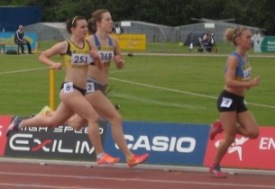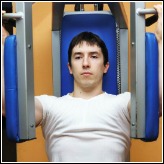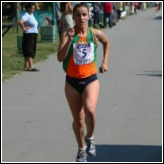Getting Started With Distance Running
Getting started with distance running is one the easiest sporting activity you can become involved with. There are however, a number of things you will need to do to help you prepare to begin training.
- It is important that you have a good reason for getting started.
- You should devise a training program which introduce you gently to running and progress you slowly toward more challenging training.
- You should also take care in choosing the correct footwear
- You should invest in training aids to help you monitor your fitness status as you improve.
It is often said that distance runners are born and not made and for the most part that statement is true. Some of us are just better equiped to participate in certain sports than others. If you are 6ft 4in and weigh 14 stones you are not going to make a very good gymnast.
Researchers have studied this over the years. They have taken biopsies (that’s a chunk of muscle) from participants in different sports. From their results, they have found that athletes from endurance sports such as middle and long distance activities had a higher percentage of type 1 muscle fiber in their bodies (muscle fibers that are designed to work for long periods) than participants who took part in power and speed sports such as sprinting and weight lifting.
However, you shouldn’t read too much into this though, it is not always the most gifted athlete who rises to the top, but they do have a head start.
Start At the Beginning

To begin, let’s look at some of the preparations you will need to make to get you stared with your distance running program.
- You will need to get yourself a good pair of trainer (running shoes). Don’t get a cheap pair, distance running means that you will be pounding the roads and trails for many miles. A good pair of trainers will protect your body and feet from unnecessary punishment.
- Get yourself a heart rate monitor. Distance running is all about running at a given tempo or effort for a given period of time. A heart rate monitor will help you to assess the intensity of your running effort i.e. your training zone and minimizing the risk of you over training.
- The other thing you will need to get before you get started with your distance running regime is a water bottle that you can take with you on runs. Distance running can sometimes induce extreme sweating, especially in warm climate. Having the means to replace fluid as it excretes from your body will greatly enhance your workout and minimize the risk of dehydration.
Finding Your Training Zone
When you first begin to train as a distance athlete, you will need to train at a pace and intensity which utilizes the aerobic energy pathway. This means that you should set your training efforts to only pushes your heart rate up to between 60 and 70 percent of your “maximum heart rate” (MHR). This is called your training zone.
Maximum Heart Rate Assessment
To find your aerobic training zone you will need to know two values:
- Your MHR
- Your “resting heart rate” (RHR)
The easiest and best known way of calculating your MHR is to use the formula:
- 220 – Age = MHR.
So, a 30 year old would have a MHR of 190 beats per minute. Researchers have looked at more sophisticated ways of calculating MHR, but there seem to be no real agreement between them.
A personal assessment is the most accurate way of arriving at your MHR but, for 90% of us this is not necessary. It would also seem that even the most accurate methods of assessing MHR will be slightly skewed. Environmental condition such as heat and altitude will affected our current fitness status and this in turn will affect your heart rate. Because of this, I really don’t see the point of sweating the small stuff. The above formula has worked well for many years.
Resting Heart Rate Assessment
Your RHR is a much easier figure to calculate. You should either take your pulse first thing in the morning. If you take a reading later in the day, you should simply lie still for a while to relax yourself before taking it. You should put on the heart rate monitor I suggested you purchase earlier and after a while take the lowest figure it gives you.
Alternately, you can take your pulse by placing your index and middle fingers on the carotid artery which you will find in the space between the windpipe and the large muscle of the side of your neck. You would count each pulse for 20 seconds and then multiply the figure by three to arrive at the beats per minutes.
Armed with these two figures you can make the following calculations with the use of the following formula:
MHR – RHR x 60 /100 + RHR (for the lower figure) and
MHR – RHR x 70 /100 + RHR (for the higher figure).
Example:
An athlete aged 30 years with a RHR of 60 beat per minutes would have the following profile
220 (MHR) – 30 (years) = 190
190 – 60 (RHR) = 130 b/m
130 x 60/100 = 78 b/m and 130 x 70/100 = 91
78 + 60 = 138 b/m and 91 + 60 = 151b/m
Your training zone for this workout would be between 138 – 151 beat per minutes.
Simple Training Program
A running program for getting started in distance running might be as follows:
- Initially you should only go out for 20 minute runs.
- Over a four - eight week period you would increase this gradually up to 30-40 minutes.
- These runs should be repeated 3-4 times per week.
- Your heart rate monitor should be set at your aerobic training zone which should be set at between 60 - 70% of its maximum capacity.
- Re-assess your aerobic training zone every four weeks.
Remember the heart is a muscle and it will get stronger with training and as the heart gets stronger it will beat slower. This will change your RHR levels and thus your training zone bandwidths too, so it is advised that you should assess your RHR regularly – one a month.
With a well structured endurance training schedule, you should see yourself improve in “leaps and bounds” (whoops, that’s another article on this website). In addition to this, distance running is an excellent way of burning calories and will help you to remain healthy and stay slim.
Sign Up For The Latest Track And Field News And Improve Your Athletic Performance!
Learn more about Track and Field







